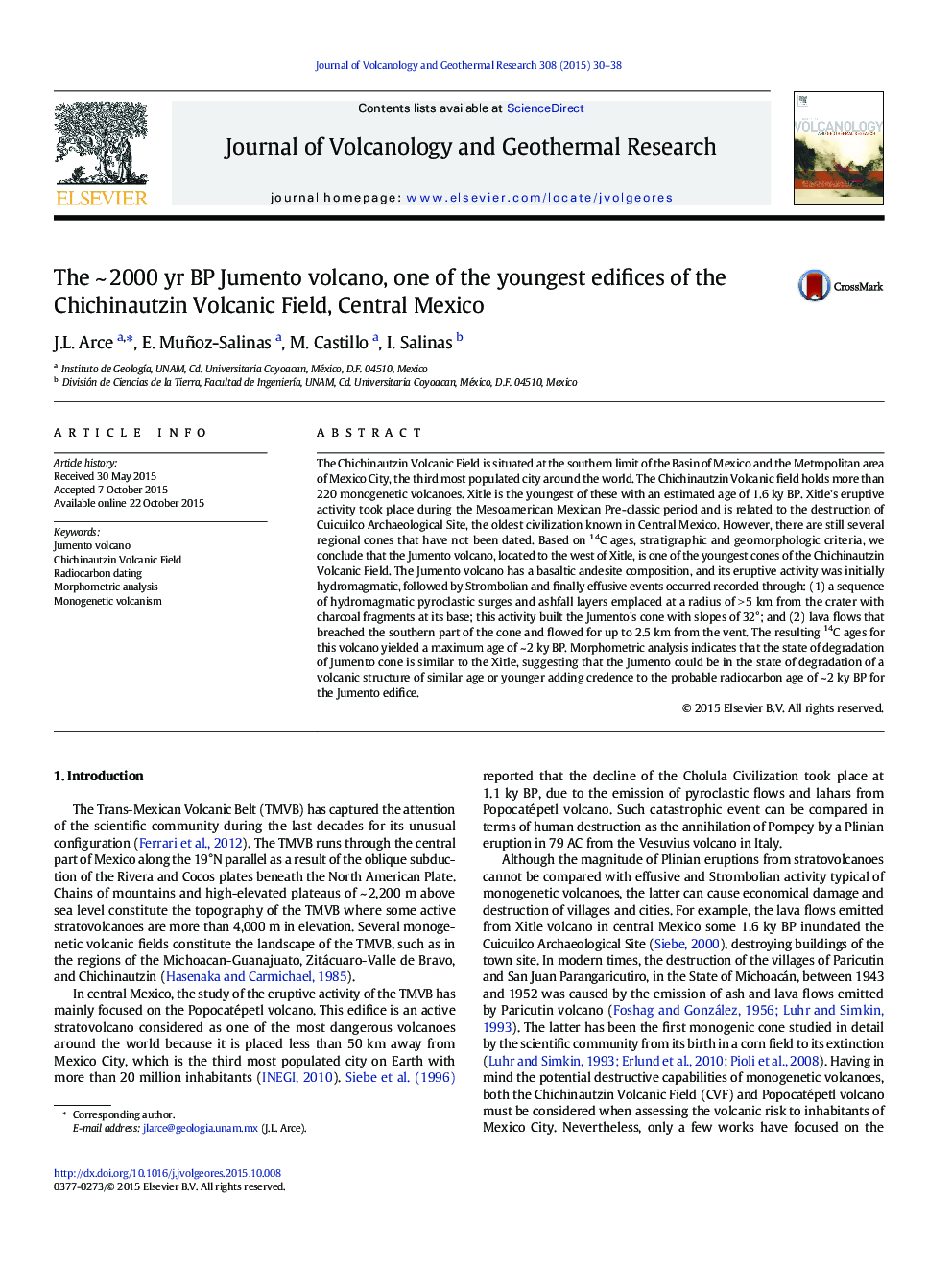| Article ID | Journal | Published Year | Pages | File Type |
|---|---|---|---|---|
| 6439604 | Journal of Volcanology and Geothermal Research | 2015 | 9 Pages |
Abstract
The Chichinautzin Volcanic Field is situated at the southern limit of the Basin of Mexico and the Metropolitan area of Mexico City, the third most populated city around the world. The Chichinautzin Volcanic field holds more than 220 monogenetic volcanoes. Xitle is the youngest of these with an estimated age of 1.6 ky BP. Xitle's eruptive activity took place during the Mesoamerican Mexican Pre-classic period and is related to the destruction of Cuicuilco Archaeological Site, the oldest civilization known in Central Mexico. However, there are still several regional cones that have not been dated. Based on 14C ages, stratigraphic and geomorphologic criteria, we conclude that the Jumento volcano, located to the west of Xitle, is one of the youngest cones of the Chichinautzin Volcanic Field. The Jumento volcano has a basaltic andesite composition, and its eruptive activity was initially hydromagmatic, followed by Strombolian and finally effusive events occurred recorded through: (1) a sequence of hydromagmatic pyroclastic surges and ashfall layers emplaced at a radius of > 5 km from the crater with charcoal fragments at its base; this activity built the Jumento's cone with slopes of 32°; and (2) lava flows that breached the southern part of the cone and flowed for up to 2.5 km from the vent. The resulting 14C ages for this volcano yielded a maximum age of ~ 2 ky BP. Morphometric analysis indicates that the state of degradation of Jumento cone is similar to the Xitle, suggesting that the Jumento could be in the state of degradation of a volcanic structure of similar age or younger adding credence to the probable radiocarbon age of ~ 2 ky BP for the Jumento edifice.
Related Topics
Physical Sciences and Engineering
Earth and Planetary Sciences
Geochemistry and Petrology
Authors
J.L. Arce, E. Muñoz-Salinas, M. Castillo, I. Salinas,
